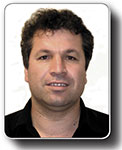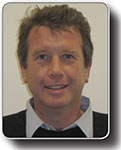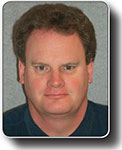Petroleum systems of the Bass Basin: a 3D modelling perspective
Natt Arian A , Peter Tingate B , Richard Hillis A and Geoff O’Brien BA Australian School of Petroleum
B GeoScience Victoria
The APPEA Journal 50(1) 511-534 https://doi.org/10.1071/AJ09030
Published: 2010
Abstract
Petroleum generation, expulsion, migration and accumulation have been modelled in 3D at basin-scale for the Bass Basin, Tasmania. The petroleum systems model shows several source rocks of different ages have generated and expelled sufficient hydrocarbons to fill structures in the basin; however, the lithologies and fault properties in the model result in generally limited migration after hydrocarbon expulsion started. Impermeable faults, together with several fine-gained sealing facies in the Lower and Middle Eastern View Group (EVG) have resulted in minor vertical hydrocarbon migration in the lower parts of the EVG. An exception occurs in the northeastern part of the basin, where strike-slip movement of suitably oriented faults during Miocene reactivation resulted in breaches in deeper accumulations and migration to upper reservoir sands and, in several cases, leakage through the regional seal.
The Middle Eastern View Group source rocks have produced most of the gas in the basin. Oil appears to be largely limited to the Yolla Trough, related to the relatively high thermal maturation of Narimba Sequence source rocks. In general, most of the hydrocarbon expelled from the Otway Megasequence occurred prior to the regional seal being deposited; however, modelling predicts it can contribute to the hydrocarbon inventory of the Cape Wickham Sub-basin. In particular, the modelling predicted an Otway sourced accumulation at the site of the recently drilled Rockhopper–1. In the Durroon Sub-basin in the Bark Trough, the Otway Megasequence is predicted to be the main source of accumulations.
The modelling has provided detailed insights into migration in the existing plays and has allowed assessment of the reasons for previous exploration failures (e.g., a migration shadow at Toolka–1) and to suggest new locations with viable migration histories. Reservoir sands of the Upper EVG are only prospective in the Yolla and Cormorant troughs where charged by Early Eocene sources; however, Miocene reactivation is a major exploration risk in this area.

Natt Arian is the managing director of Arian Petroleum Pty Ltd (privately owned petroleum systems and basin analysis consultancy). He has worked for and consulted to several Australian and overseas companies. He is interested in integrated petroleum systems and basin analysis, prospect and reserve identification, fault seal analysis, reservoir characterisation and structural geology. He is working on determination of the effects palaeo-stresses to be integrated in to 3D petroleum systems modelling for better determination of the hydrocarbon migration pathways. He also interested in applying basin analysis techniques in geological carbon storage and geosequestration research, where he works closely with Geoscience Victoria. Member: AAPG, PESA, SPE and SEG. natt.arian@arianpetroleum.com.au |

Peter Tingate is a senior geologist with the Energy Geoscience Group at GeoScience Victoria. He works on the carbon dioxide sequestration potential of Victoria’s sedimentary basins, as well as their petroleum systems. Peter received his BSc (Hons) and PhD from the University of Melbourne and worked at the Australian School of Petroleum until joining Vic DPI in 2008. He has published papers on basin modelling, diagenesis of sedimentary rocks and geological storage of CO2. Member: PESA and AAPG. peter.tingate@dpi.vic.gov.au |

Richard Hillis is CEO of the Deep Exploration Technologies CRC. He graduated with a BSc (Hons) from Imperial College (London, 1985), and a PhD from the University of Edinburgh (1989) and was until recently State of South Australia Professor of Petroleum Geology and Head of the Australian School of Petroleum (University of Adelaide). He has published over 100 papers in the areas of petroleum geomechanics and basin tectonics and has consulted extensively to, and run short courses for, the petroleum industry on these topics. Richard is a non-executive director of JRS Petroleum Research (privately owned image log and geomechanics consultancy), Petratherm (ASX-listed geothermal company) and AuScope (national research facility in the earth sciences). Member: AAPG, AGU, ASEG, EAGE, GSA, GSL, PESA, SEG and SPE. rhillisdetcrc@gmail.com |

Geoff O’Brien is the manager of Energy Geoscience in GeoScience Victoria (DPI), where he co-ordinates science research in the geological carbon storage, geothermal and petroleum areas. Geoff has worked for BHP, Western Mining Petroleum, AGSO/Geoscience Australia and the University of Adelaide and has consulted to a wide range of companies in Australia and overseas. Dr O’Brien is interested in the application of integrated petroleum systems approaches in basin assessment and has published more than 170 papers and abstracts. Geoff has won numerous industry and science awards and was the 1992 PESA Australian Lecturer. Geoff.O’brien@dpi.vic.gov.au |


